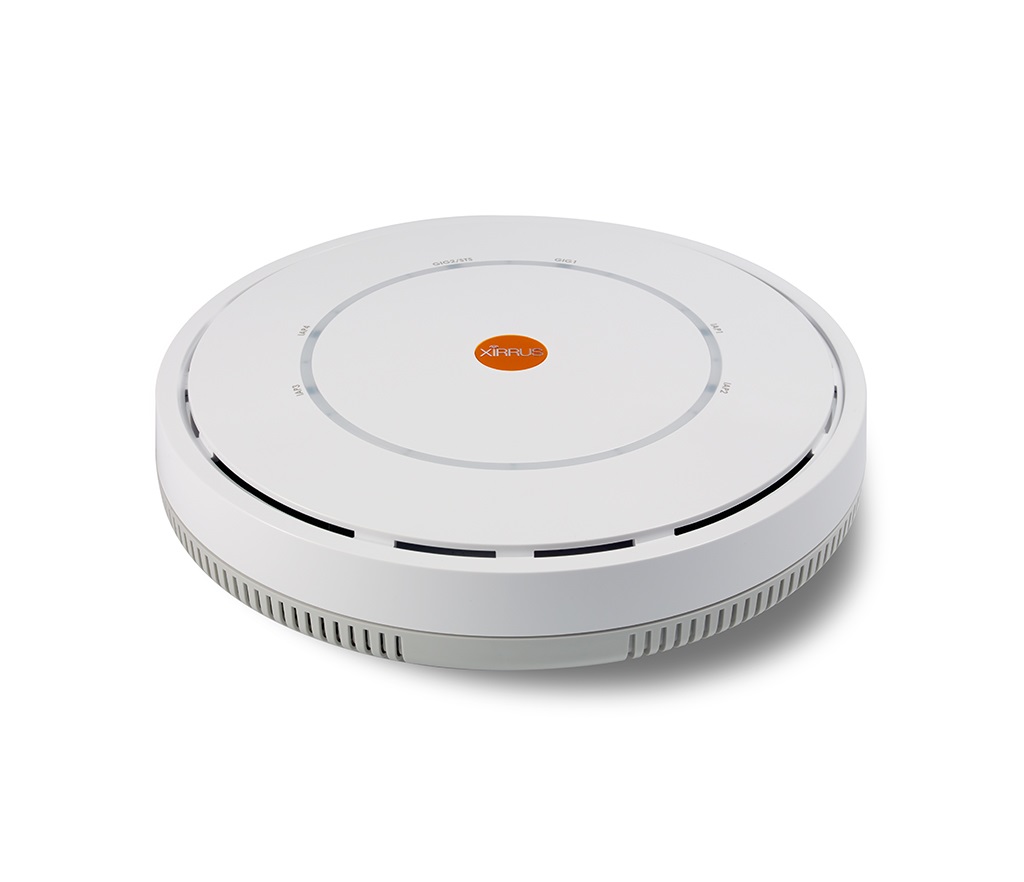Xirrus and Ruckus push 802.11ac wi-fi boundaries

Wireless networking is not just convenient: for devices such as smartphones, ebook readers and tablets, it's the only way to connect to local networks. As the use of mobile (often BYO) devices increases, businesses are under pressure to provide fast and reliable wireless network coverage; many public venues also see wireless networking provision as a value-added benefit.
The 5GHz 802.11ac wi-fi standard builds on dual-band (2.4/5GHz) 802.11n, adding wider channels, more streams, up to 256 levels of QAM (quadrature amplitude modulation) and MU-MIMO (Multi-User Multiple-Input-Multiple-Output). From October 2013, 802.11ac implementations dubbed 'Wave 1' supported 80MHz channels, three spatial streams and 256-QAM, to give data rates of up to 433.3Mbps per spatial stream or 1.299Gbps in total. We are now seeing the first 'Wave 2' systems, which will eventually support 160MHz channels, four spatial streams and MU-MIMO, giving data rates of up to 6.93Gbps.
Xirrus XD4 802.11ac Wireless Access Point
The $2,495 (c. £1,640) Xirrus XD4 is a four-radio 802.11ac wireless access point (WAP) that, compared to a single-radio unit, supports four times the maximum number of users, with higher bandwidth and wider coverage, while offering simple installation and low TCO.

Designed to service the rapidly rising need for bandwidth due to the growth in BYOD and the Internet of Things (IoT), the new XD4 (XD stands for [e]Xtreme Density) integrates four 802.11ac Wave 1 radios to provide a high-capacity, high-bandwidth, future-proof wireless connection in an efficient and easily installed package. According to Bruce Miller, VP of product marketing at Xirrus, "the XD4 is the only four-radio 802.11ac product available on the market today".
Xirrus can provide WAP systems tailored to everything from hotel rooms and offices to convention centres and stadiums. The XD4 drops into the middle of Xirrus's current range of wireless access points, which now comprises seven products from the 2-radio XR-320 up to the modular 16-radio XR-6000.
Wireless network systems often use a central controller connected to multiple WAPs, but Xirrus's products, including the XD4, integrate the controller function into each WAP. Distributing control in this way eliminates the possibility of failure for the entire network in the event of a controller fault, and also facilitates network scaling.
Says Miller: "With different devices and applications competing for bandwidth on wireless networks, one AP is not enough to maintain acceptable performance. XD solves this problem by integrating more 802.11ac radios per AP than any solution in the market, and eliminating the central controller from the network. This combination establishes the Xirrus XD as a solution that not only performs better, but actually reduces implementation and ongoing operational costs -- a win-win for everyone."
Bolts on the bottom of the XD4, in conjunction with a variety of adapter plates, allow the unit to be ceiling-, bracket- or pole-mounted. Power is provided to the XD4 using Gigabit PoE (Power over Ethernet) power injection, with RJ-45 connectors handling power and data connection.
Xirrus specialises in providing managed, scaled, high-performance wireless systems at the lowest total cost of ownership. The company estimates that TCO can be reduced by 50 percent via a 75 percent saving in equipment, cabling and network switches. Shane Buckley, CEO at Xirrus, says "We are dedicated to providing the most powerful, scalable and reliable Wi-Fi solutions available."
Ruckus Wireless ZoneFlex R710 Wireless Access Point
Ruckus Wireless claims its $1,295 (c. £832) ZoneFlex R710, which launched on 2 April, is the first 802.11ac Wave 2 WAP on the market and the first to implement MU-MIMO. According to Ruckus "this enables over two times the density of mobile devices versus Wave 1, and aggregates data rates exceeding two gigabits per second." The latter figure is arrived at by combining 1.733Mbps 5GHz 802.11ac and 800Mbps 2.4GHz 802.11n.
The ZoneFlex R710 features BeamFlex adaptive antenna technology, which optimizes antenna coverage on a per-client, per-transmission basis for increased performance and range. Co-channel interference is minimized by directing the signals where they are needed rather than towards neighboring WAPs. BeamFlex is Ruckus's method of beam forming. Beam forming is not a new idea and there has been some debate as to the utility of different methods. Ruckus offers its view on the subject in this blog entry.
An FAQ on Ruckus's website describes these key benefits in more detail. Specific details of the R710 can be found on the product's data sheet.
Connection is via two RJ-45 Gigabit ports, with power supplied through one port supporting 802.3af PoE. A rear USB port caters for Bluetooth Low Energy (BLE) beacons and other Internet of Things (IoT) devices. Network operators can provide income-generating services by combining such devices with Ruckus SPoT location-based services (LBS) and analytics.
Five LEDs along the front edge of the case indicate status. Four 'keyholes' on the underside of the case allow for mounting (an optional mounting bracket is available) and a Kensington lock point is provided as an anti-theft measure. The R710 measures 22cm by 22cm by 6cm and weighs 1.1kg.
Although individual ZoneFlex R710 WAPs can be operated standalone, for larger installations an external controller is required to provide centralised management. Ruckus supplies wireless network planning and Linux-based management software for its hardware products.
Among the first organizations to deploy the ZoneFlex R710 within a production environment is San José in California.
In a statement, Vijay Sammeta, the city's CIO, said: "We are at an inflection point in the industry as we deal with insatiable demand for wireless capacity and speed. We need to be able to plan and prepare for devices and services we haven't even seen yet. Wave 2 represents an investment in a platform that not only meets our current needs, it will also meet those in the future that we can't even predict. Delivering our Wickedly Fast Wi-Fi service has become a distinct competitive advantage for the City of San José. The Ruckus ZoneFlex R710 helps us take this to the next level. It's simply the best-performing Wi-Fi access point we've ever deployed, even without MU-MIMO clients."
Sammeta says that after installing the Ruckus ZoneFlex R710, the city was able to achieve dramatic performance improvements, reaching over 445Mbps speed with two-stream-capable laptops, and over 200Mbps with single-stream mobile smartphones.